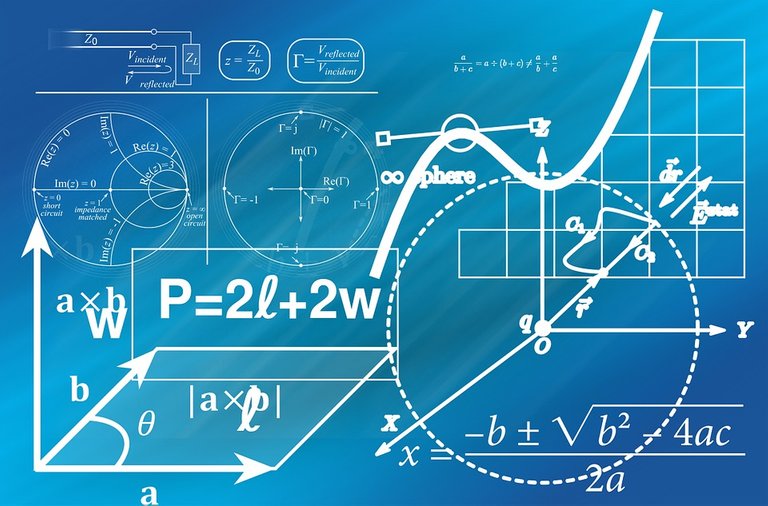Nevertheless, it is known long ago that the latter question not only is not resoluble with the methods of the Geometry, but it does not even have sense in yes. It is not possible to ask if it is true or not that for two points only a straight line happens, only it is necessary to say that the Geometry Euclídea treats of figures to which it calls straight lines and which it assigns the property of staying unívocamente determined by two of his points, the concept of real is not applied to the propositions of the pure Geometry, because with the word real we always usually designate, ultimately, the coincidence with a real object; the Geometry, nevertheless, does not deal with the relation of his concepts with the objects of the experience, but only with the logical relation that these concepts keep between yes.
The one that, in spite of everything, us sintamos inclined to qualify of real the theorems of the Geometry has easy explanation. The geometric concepts correspond more or less exactly with objects in the nature, which are, without any genre of doubts, the only cause of his formation, although the Geometry drifts apart from this to give to his building the maximum logical rigor, the true thing is that the habit, for example, of seeing a segment as two places marked in a practically rigid body is much settled down in our habits of thought, and also we are used to perceiving three places as placed on a straight line when, by means of suitable election of the point of observation, we can make coincide his images on having looked with only one eye.
If, allowing us to go for the habits of thought, we add now to the theorems of the Geometry Euclídea one only more theorem, from that to two points of a practically rigid body the same distance always corresponds I segment, independently of the changes of position to which we submit the body, then the theorems of the Geometry elucidate it they turn into theorems regarding the possible relative positions of practically rigid bodies. The this way extended Geometry is necessary to contemplate it as a branch of the physics, now yes it is necessary to ask for the truth of the this way interpreted geometric theorems, because it is possible to ask if they are valid or not for those real objects that we have assigned to the geometric concepts, although with certain imprecision, we can say, since, that for truth of a geometric theorem we understand in this sense his validity in a construction with rule and compass.
Naturally, the conviction that the geometric theorems are real in this sense rests exclusively in experiences I satiate incomplete. Of entry we will give supposed this truth of the geometric theorems, for then, in the last part of the exhibition (the theory of the general relativity), to see that this truth has his limits and to need which are these.
Under the scheme of the system of coordinated, basing on the physical interpretation of the distance that we have just indicated we are also in conditions to determine the distance between two points of a rigid body by means of measurements. For it we need a segment that we could use at once forever and that serves as scale unit, if A and B are two points of a rigid body, his straight line of union is then construible according to the laws of the Geometry; on this straight line of union, and from A, we take the segment S so many times as it is necessary to come to B, the number of repetitions of this operation is the measurement of the segment AB, on this he rests any measurement of lengths.
Any spatial description of the place of an event or of an object consists of specifying the point of a rigid body (body of reference) with which the event coincides, and this costs not only for the scientific description, but also for the daily life. It is good to consider the following thing, The physics takes as an object the knowledge of the exterior world, costs to say, the comprehension of the laws that govern the nature and his phenomena. The Geometry, as part of the Mathematics, belongs more to the world of the ideas and can be created, she herself, the objects that then he is going to study.
Nevertheless, especially in his beginning, the Geometry took these objects to image and resemblance of those who were seen and observed in the Nature: for it it was a 'visual' and as such science, the most intuitive part of the Mathematics. Geometry and Physics grew observing the Nature, giving first more attention to the 'form' of the objects and the second one to his movement, but since any movement supposes a trajectory, one and another science was always overlapped in an inseparable brotherhood. This did that the big changes in the history of the Physics were accompanied always, sometimes with advance, sometimes late, but always with a well-known reciprocal influence, with the big changes in the history of the Geometry.
The ancient Physics, which culminates in the Philosophy of Aristóteles (384-322 B.C.), the Engineering of Arquímedes (287-212 B.C.) and the Astronomy of Claudius Ptolomeo (178-100 B.C.) developed in time of the Metric Geometry of Such of Mileto (585 B.C.) and Pitágoras (532 B.C.) and of the Axiomatic one of Euclides (IIIrd century B.C.).
Bibliographical source.
Geometry for Felipe de Jesús Landaverde - 1997
Analytical geometry: The second Edition: The mathematical IIIrd for Ramiro García Bautista
Introduction to the geometry for Carlos Rojas - 2015.


Congratulations @iguana78! You have completed the following achievement on the Steem blockchain and have been rewarded with new badge(s) :
Click on the badge to view your Board of Honor.
If you no longer want to receive notifications, reply to this comment with the word
STOP